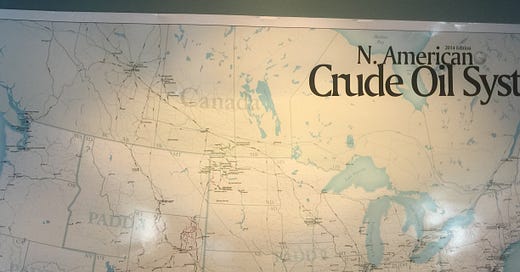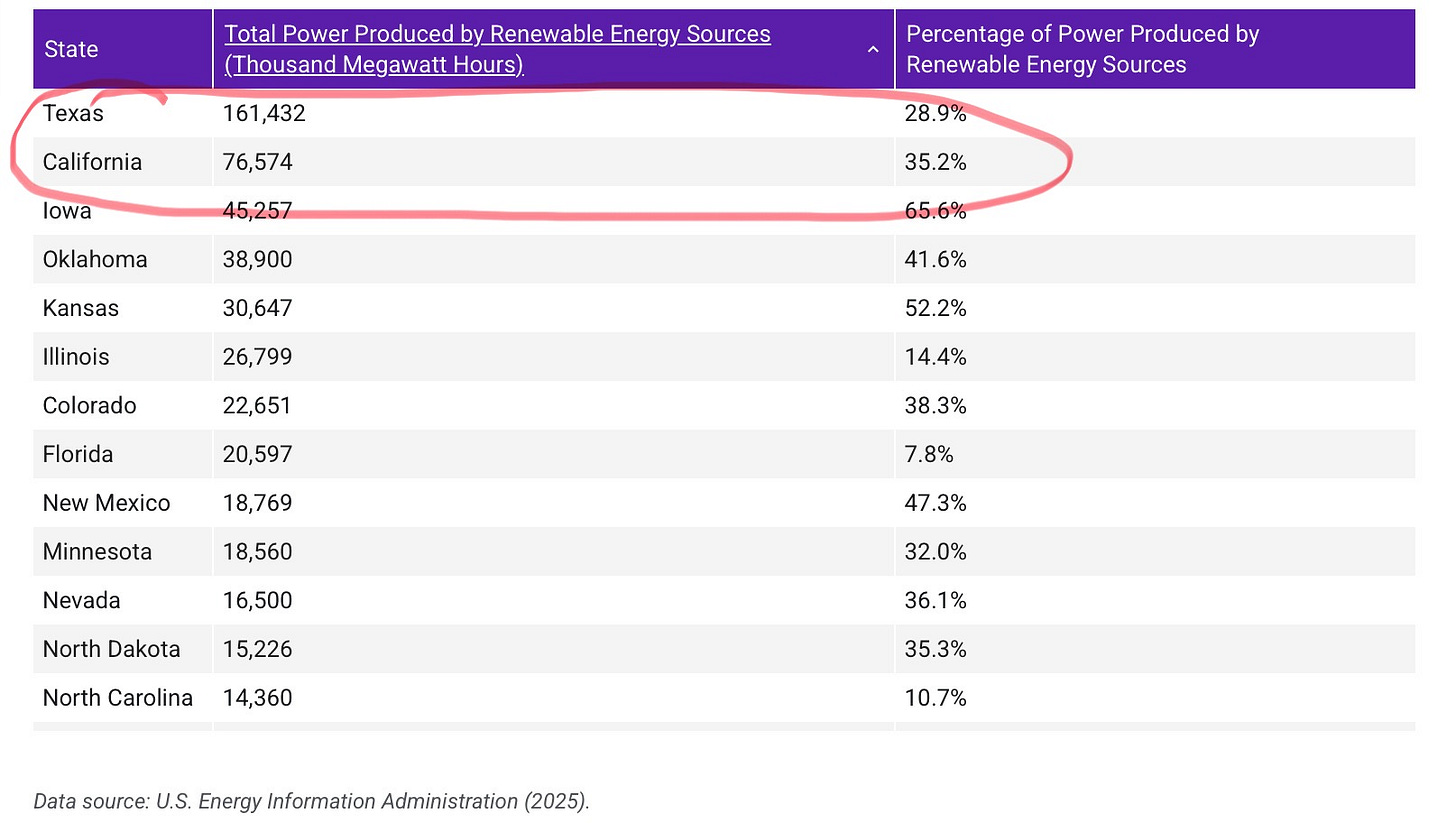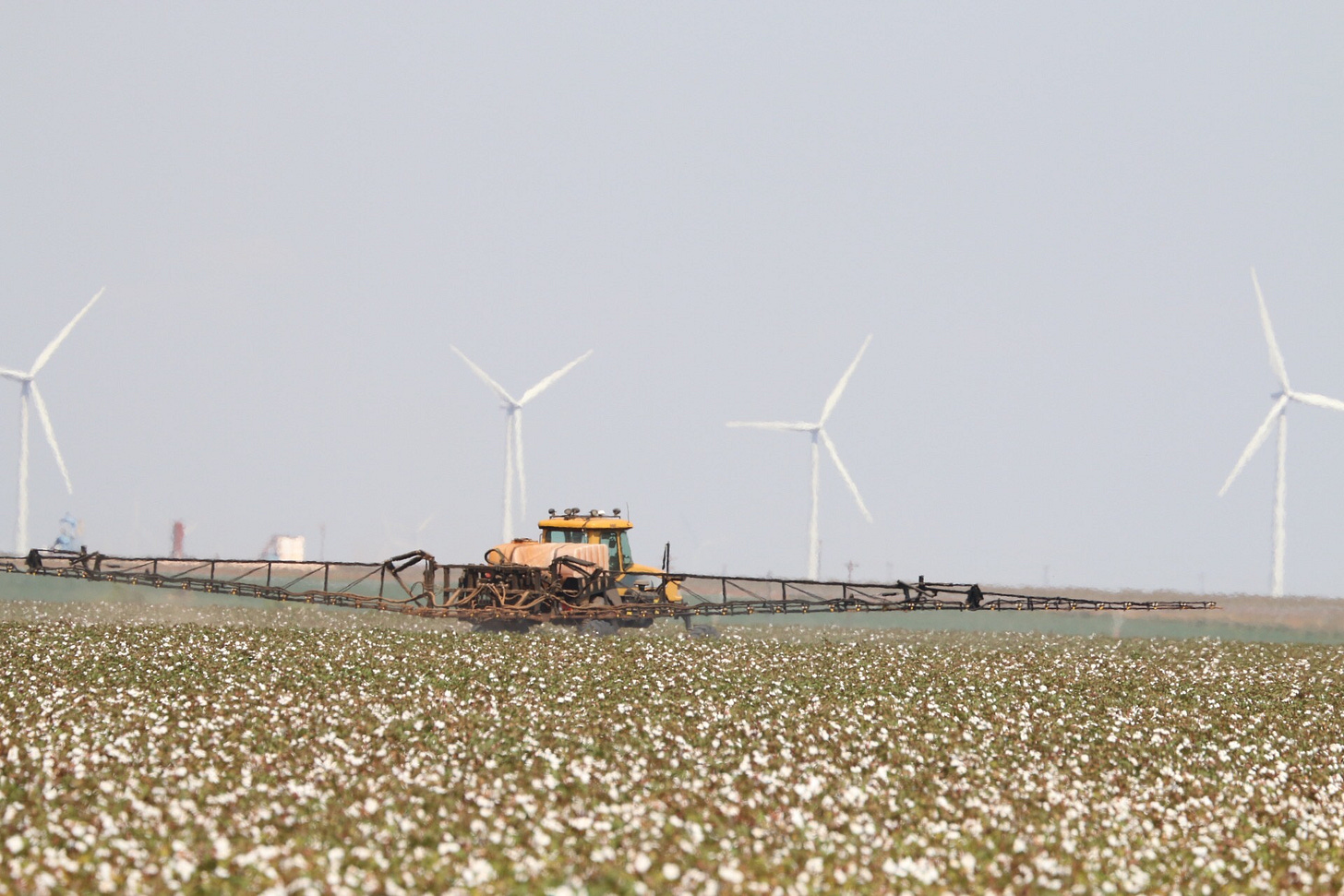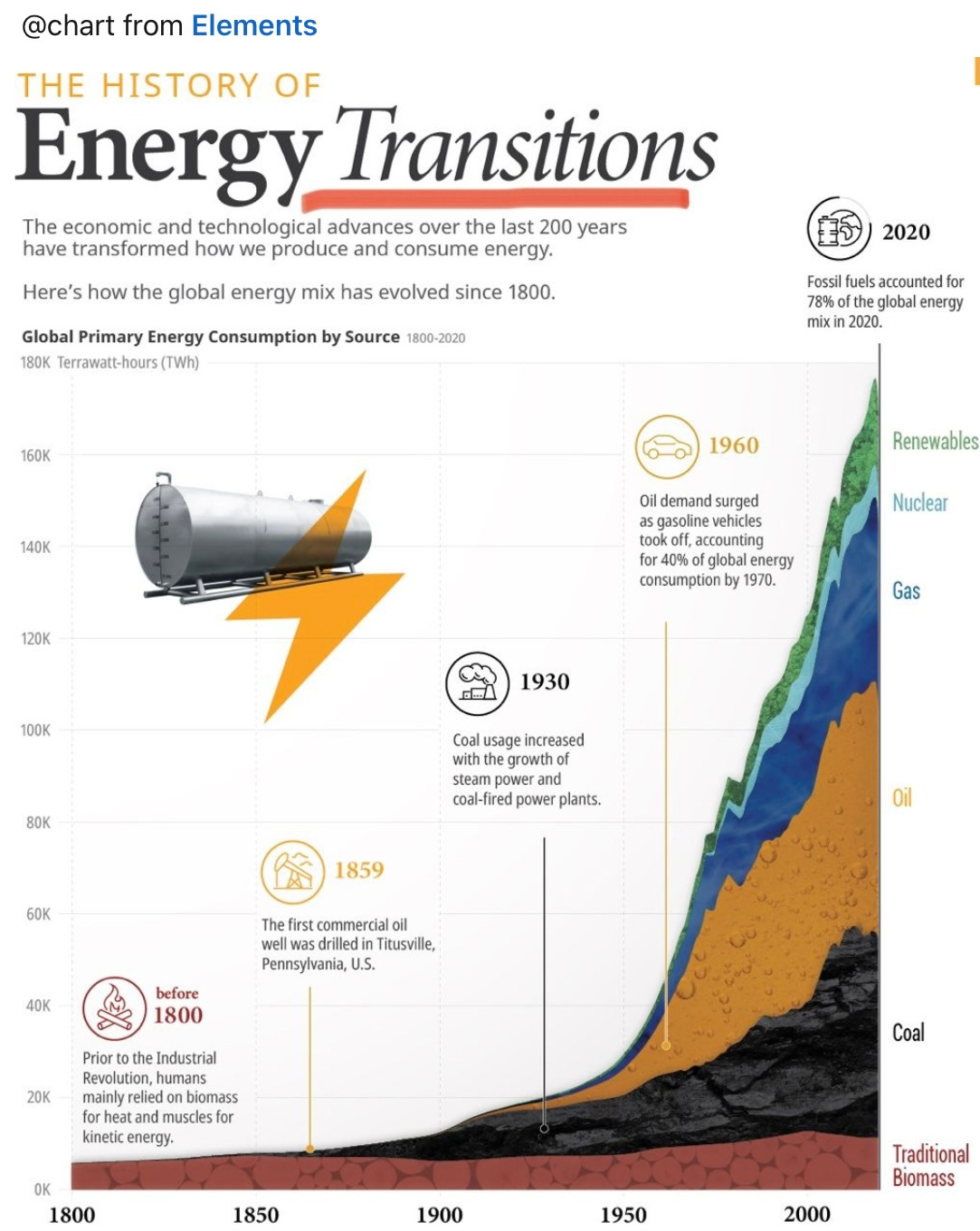Texas versus California.
So much to contrast, so much to caricature!
Texas is ruby Republican red, California Democrat dark blue.
Texas is all about free markets, California a collective of government-enthralled progressives.
Texas loves its fossil fuels while California fancies renewables.
Texas eschews climate concerns while California wears them on its sleeve.
Which of those directions is America headed under Donald Trump?
Well, not so fast. That’s the wrong question. To understand why, look beyond the contrasts and caricatures.
California, as you may have heard from crowing Californians, is leading the nation in clean energy adoption. Right alongside Texas, though taciturn Texans sometimes don’t go out of their way to mention this.
How did they get here, these two top players in the U.S. energy transition?
California’s Democrat-dominated government didn’t achieve this standing by ignoring markets, or even fossil fuels, as the state has deployed regulation and subsidies to speed things along. Witness the evidence:
Texas Republicans in no way ignored renewable energy, or even shunned strategic government subsidies to accrue the bonanza of inexpensive clean energy the state now enjoys and continues to barrel ahead with. We’re looking at you former governors George W. Bush and Rick Perry, whose state-funded transmission lines and generous subsidies underwrote the state’s wind boom decades ago. It’s a great story, which I wrote about in The Wall Street Journal back in 2016 here.
Seeing is believing:
The truth is, they’ve both California and Texas have gotten here with an effective mix of private markets, public policy and a wide array of public and private investment. The approach differed, as it should, for what are very different places with very different cultures and very different politics.
So what direction is America is headed — the way of Texas or the way of California? The is answer: “yes!”
The better question is this: In the deck of options, what combination of private ambition and public policy yields the winning hand to meet growing demand at the lowest price in the cleanest way for the multitude of communities across the country?
President Joe Biden played a sort of California hand, and his administration pushed policies pursuent that. Now through the saloon door saunters President Trump, Texas style, to remind that fossil fuels aren’t chopped liver and ain’t going away any time soon, love’m or hate’m. Maybe never.
But here in real world America — where energy demand is growing as inexorably as climate concern — caricatures and confrontation count for far less. A heady, dare I say pragmatic, mix of competition and cooperation mean much more.
The energy transition won’t slow down, much less reverse course. So the question becomes, what shape will it take, and what are the climate implications of the transition that is propelled by this mix of forces?
I’m headed to Houston today for CERAWeek, one of the biggest energy industry conferences of the year and the first since the new Trump crowd stormed into DC, to begin figuring out those questions. There won’t be definitive answers. The country’s energy path, like those of all nations, will always be work in progress.
But here are a few things I’ll be looking out for and writing about here at The Energy Adventure(r) and at Cipher News throughout the week and beyond:
— Energy demand. Just how much energy is needed? After several decades of sluggish energy consumption growth, forecasts now predict a strong and steady increase in energy needs over the coming decades, particularly electricity.
— Fossil fuels vs. Clean Energy. Which sources of energy, and what pathways for delivering it, make the most sense for filling those urgent demand needs? What does that mean for greenhouse gas emissions, and climate change?
— Permitting. Addressing growing energy needs often means building, from pipelines to carry oil and gas to transmission lines that distribute electricity. These projects are often controversial because they’re large physical infrastructure that must traverse communities. What gets built where and how fast effectively is the energy transition.
— The fate of Biden policies. How exactly will the new administration treat the Biden administration’s signature climate initiative, the Inflation Reduction Act, which Donald Trump has disparaged as the “green new scam.” Despite the president’s disdain, most of the subsidies in the initiative target projects in Republican dominated states, including Ohio, Georgia, Texas, Louisiana and North Dakota. Will they really go away so easily, given what’s at stake for the communities, voters and politicians in question.
— Tariffs and Trade. Energy industry officials will be trying to gauge the impact of Trump administration trade policies on energy markets. Tariffs on Canadian oil imports and Chinese solar panels and batteries will likely push up energy prices, potentially undercutting President Trump’s promise to lower them.








